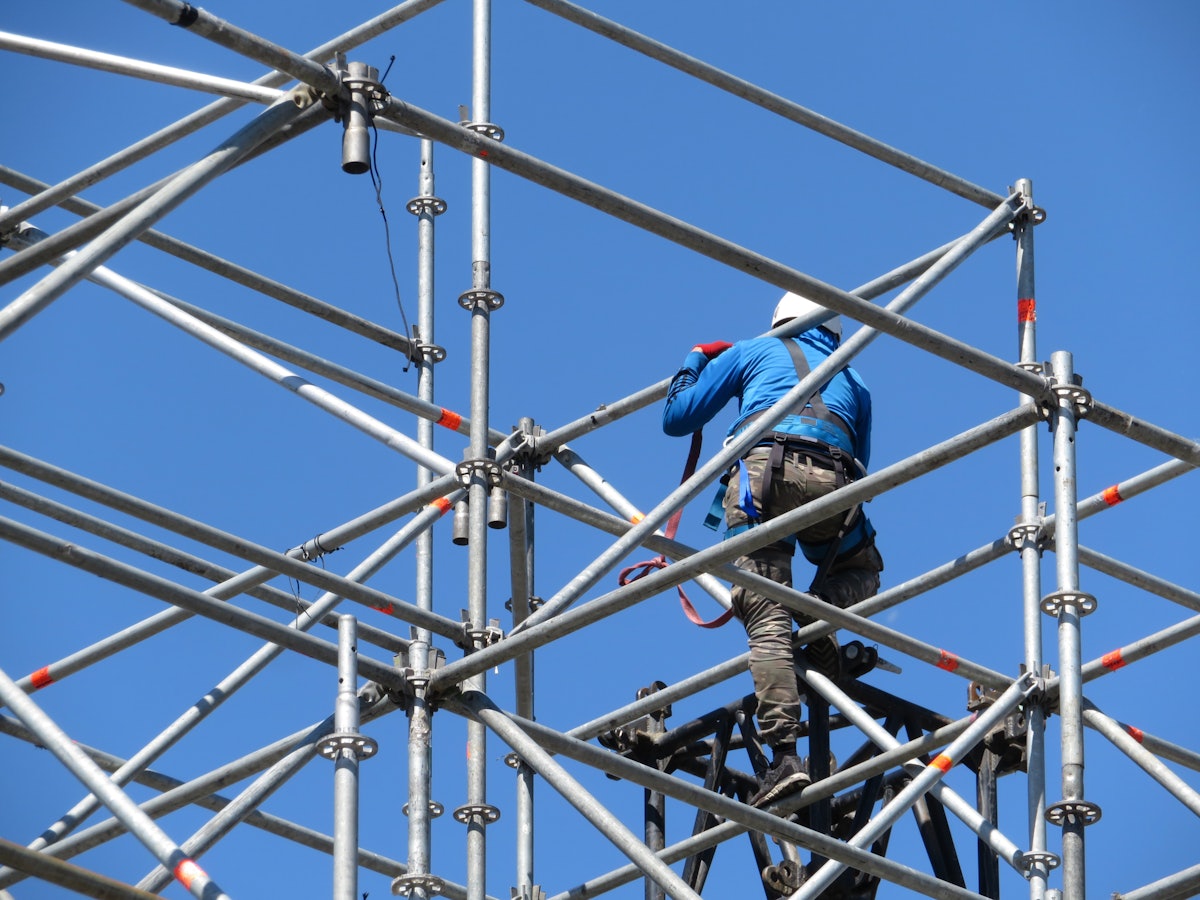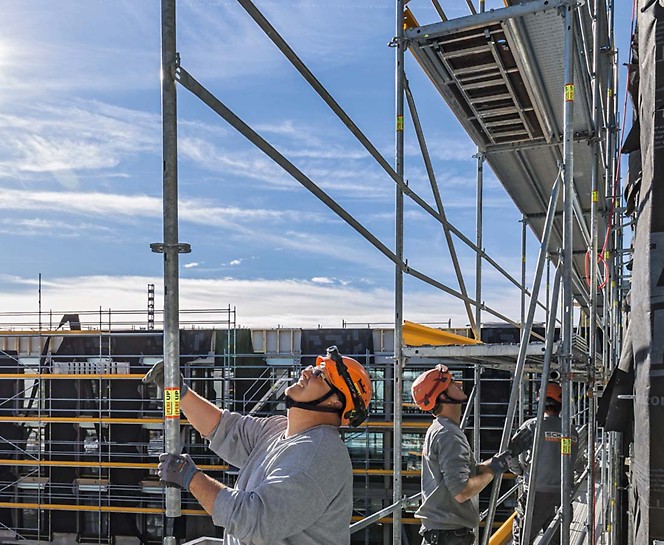Expert Scaffolder Surrey Offering Customized Solutions for Your Needs
Expert Scaffolder Surrey Offering Customized Solutions for Your Needs
Blog Article
Exploring the Various Sorts Of Scaffolding Made Use Of in Building And Construction Tasks
The construction industry depends greatly on different types of scaffolding to fulfill details project needs, each offering distinct benefits and applications. Conventional framework scaffolding supplies a durable foundation for general jobs, while put on hold scaffolding is crucial for job on high-rise frameworks.

Traditional Frame Scaffolding
Conventional frame scaffolding is just one of the most widely used methods in the building and construction industry because of its robustness and convenience. This system contains horizontal and upright structures that are assembled to produce a stable platform for materials and employees. The primary elements consist of vertical messages, straight journals, and angled dental braces, which together give a solid framework that can sustain significant lots.
Among the essential advantages of typical framework scaffolding is its versatility to numerous construction jobs, ranging from residential structures to huge commercial frameworks. The modular layout permits simple assembly and disassembly, making it effective for both temporary and long-lasting tasks. In addition, the system can be personalized in elevation and size, suiting various structure designs and site problems.
Security is critical in scaffolding applications, and typical frame systems are outfitted with guardrails and toe boards to protect against falls and make certain employee security. Routine evaluations and adherence to safety policies are critical in preserving the stability of the scaffold (Scaffolding). In general, standard structure scaffolding stays a basic selection in the building sector, giving a dependable platform for labor and enhancing total project effectiveness

Suspended Scaffolding
Put on hold scaffolding offers an one-of-a-kind solution for building tasks that require accessibility to elevated surfaces, especially in scenarios where traditional frame scaffolding may be unwise. This kind of scaffolding is typically put on hold from the roof or top levels of a framework, making use of a system of ropes, platforms, and pulley-blocks to create a working room that can be adapted to numerous heights.
Among the main benefits of put on hold scaffolding is its versatility. It can be quickly repositioned or lowered to accommodate changes in building and construction needs, making it excellent for tasks such as window setup, frontage work, and upkeep on skyscrapers. Additionally, the minimal impact of put on hold scaffolding permits better use ground room in metropolitan atmospheres, where space is frequently limited.
Safety is a crucial consideration in the use of suspended scaffolding. Correct rigging and securing systems must be used to make certain security and stop crashes. Operators should also be trained in the secure use of this equipment. In general, put on hold scaffolding offers a reliable and effective solution for accessing hard-to-reach locations in numerous construction scenarios, improving both productivity and safety and security on site.
System Scaffolding
System scaffolding, frequently considered as a modern service in the scaffolding market, includes pre-engineered parts that can be rapidly set up and adapted for various building and construction tasks. Scaffolding. This kind of scaffolding is defined by its modular design, which enables for convenience and efficiency on job websites, suiting various elevations and structural demands
Typically made from high-strength steel or light weight aluminum, system scaffolding uses improved sturdiness and stability. The elements consist of upright messages, horizontal ledgers, and diagonal braces, which interconnect safely, ensuring a robust framework. The design typically incorporates standardized installations, streamlining assembly and disassembly procedures, thereby minimizing labor time and costs.

Rolling Scaffolding
Rolling scaffolding is a flexible alternative to traditional fixed scaffolding, made for movement and convenience of use on building sites. This sort of scaffolding includes a platform supported by structures with wheels, enabling workers to conveniently relocate it as needed. The wheelchair function considerably boosts performance, as it visit this site reduces downtime connected with disassembling and constructing dealt with scaffolding.
Usually built from lightweight products such as aluminum or steel, rolling scaffolding supplies a strong yet portable solution for jobs needing constant repositioning - Scaffolding. It is particularly useful in tasks such as painting, drywall installment, and electrical job, where accessibility to various elevations and places is necessary
Safety and security is critical in rolling scaffolding layout, with attributes such as locking wheels to avoid unexpected motion when being used, and guardrails to shield workers from falls. In addition, numerous models are flexible in elevation, suiting various job requirements.
Cantilever Scaffolding

The design of cantilever scaffolding typically involves using arms or braces anchored basics to a structure or structure, enabling the system to expand exterior securely. Security is paramount; navigate to these guys thus, these scaffolds must be crafted to withstand environmental problems and different tons. Normal assessment and maintenance are necessary to make sure architectural stability and employee security.
Cantilever scaffolding is preferred for its adaptability and reliable use room, making it a prominent option in urban environments where space restrictions are common. Furthermore, it facilitates easier access to high elevations, ultimately contributing to the total effectiveness of building tasks. Just like all scaffolding kinds, proper training and adherence to safety requirements are essential for employees making use of cantilever scaffolding.
Conclusion
In conclusion, the diverse kinds of scaffolding made use of in building and construction jobs each serve distinct functions customized to particular website requirements. Traditional framework scaffolding gives stability, while suspended scaffolding offers flexibility for raised tasks. System scaffolding helps with fast assembly, and rolling scaffolding improves wheelchair for differing workplace. Cantilever scaffolding effectively addresses barriers in metropolitan settings. Recognizing these scaffolding kinds is essential for maximizing security and productivity in building and construction, inevitably adding to the successful completion of tasks.
Traditional frame scaffolding supplies a durable structure for general tasks, while put on hold scaffolding is crucial for job on skyscraper structures.Rolling scaffolding is a flexible alternative to standard set scaffolding, made for flexibility and convenience of usage on construction websites. As with all scaffolding types, proper training and adherence to safety requirements are critical for employees making use of cantilever scaffolding.
Standard framework scaffolding provides security, while put on hold scaffolding supplies convenience for raised jobs. System scaffolding promotes fast assembly, and rolling scaffolding boosts flexibility for varying job atmospheres.
Report this page